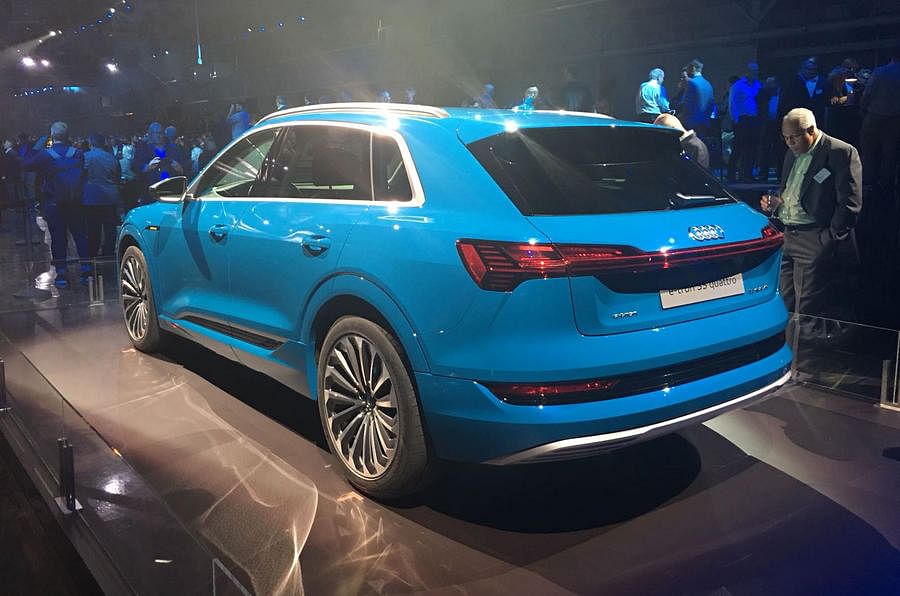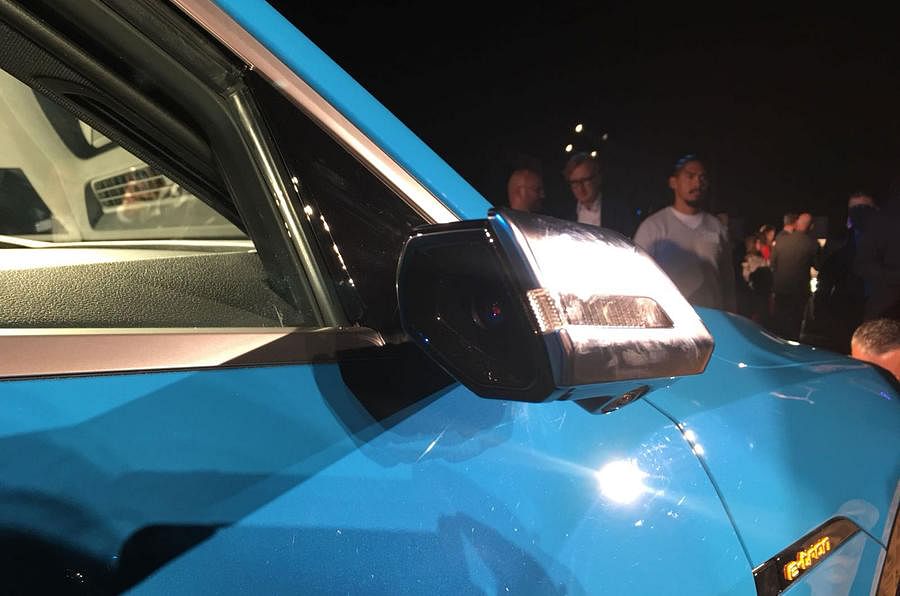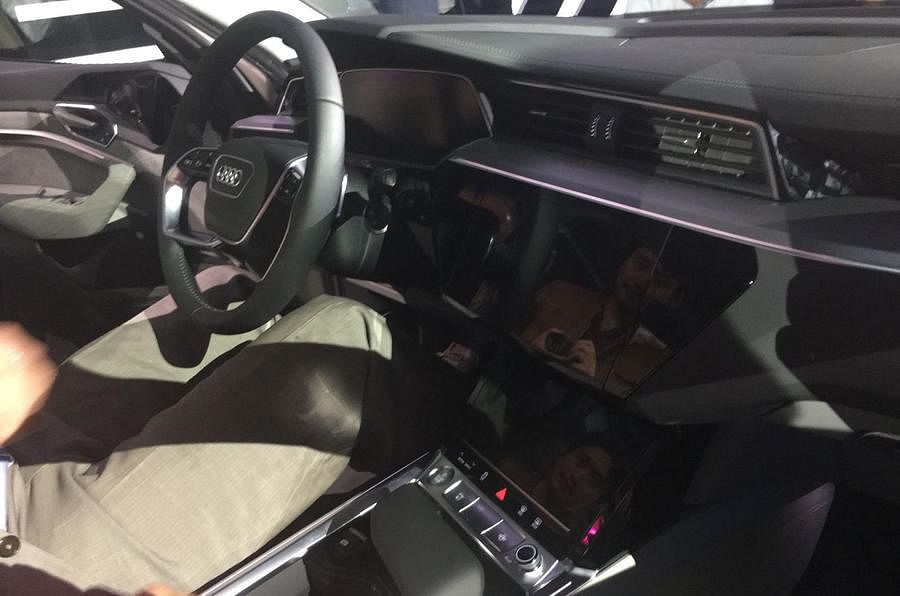Audi E-tron launches as brand's first electric-only model
Audi's first standalone electric model offers 249 miles of range, the same as the Mercedes EQC
The Audi E-tron is the third electric premium SUV to be revealed this year, taking on the Jaguar I-Pace and Mercedes EQC, as the bid to rule the zero-emissions sales charts ramps up.
Audi’s first standalone electric model gets 249 miles (400km) of range on the WLTP test cycle – identical to the EQC but behind the I-Pace, which manages 292 miles (470km). However, powertrain director Siegfried Pint said the E-tron's homologation was ongoing and the range will be nearer 280 miles (451km).
A cheaper version with a smaller battery and, therefore, less range will follow in the next 12 months, Pint added.
The E-tron is the first production car in the world to offer 'virtual' side mirrors, which remove traditional door mirrors and instead use cameras with images appearing on screens in the door panels.

Sitting between the Q5 and Q7 in size, the E-tron features a handful of design elements that are intended to make it stand out from other Audi models.
It keeps the single-frame grille but uses a lighter colour for the grille louvres. “We didn’t want to lose the single frame; it contributed to making us the premium brand that we are today,” said exterior designer Stephan Fahr-Becker. “We selected a lighter colour. If a car is approaching from 50 or 100 metres, the single frame is recognisable as an Audi but different from, say, a Q8."
The E-tron also gets a name badge on the front of the vehicle, in a similar vein to what Audi does with its RS performance models. “We were bold enough to put the name on the front of the car; we want to say the E-tron is the first of its kind,” said Fahr-Becker.

There are also specific wheel designs for the E-tron (“The task was to create aerodynamic wheels which still look sporty,” said Fahr-Becker) and orange hints – for example, in the name badge and optional orange brake calipers. “We took the colour from high-voltage cables. We wanted to create a special colour to accentuate that its electric,” Fahr-Becker added.
Aerodynamics also played an important part in the design to help with the E-tron’s range, said Audi, achieving a drag coefficient of 0.28. There is an air inlet with ducts for cooling the front brakes, as well as adaptable, speed-dependent air suspension and a fully clad underbody. The E-tron also sits slightly lower than a traditional SUV; at 1616mm high, it’s 43mm lower than the Q5.
The four-wheel-drive E-tron uses two asynchronous motors, one at the front axle and one at the rear axle, producing up to 402bhp and 487lb ft. In normal mode, it produces 355bhp and 414bhp and is capable of 0-60mph (96kph) in 6.4secs. At full power, in boost mode, it achieves 0-60mph in 5.5secs. Top speed is 124mph (200kph). Energy to power the motors comes from a 95kWh battery – the largest on the market and only matched by Tesla’s top-of-the-range Model S 100D.
Single-stage transmissions transfer drive to the wheels, and the lion’s share goes to the rear axle at moderate speeds. At full load, it will be a 50/50 split.
The car uses an energy recuperation system which, on average, contributes 30% to the range, says Audi. There are two ways: coasting recuperation when the driver releases the accelerator, or braking recuperation when he or she depresses the brake pedal.
Using 150kW public fast chargers, which are currently uncommon, the E-tron will be capable of charging up to 80% in 30 minutes. Audi is one of a number of car makers (including BMW, Daimler and Ford) that have invested in charging network Ionity. Audi says the network should have nearly 1200 150kW charging points running by the end of this year.
For at-home charging, there is a standard 11kW charger which charges the E-tron in 8.5 hours. An optional 22kW charger halves this time.

The interior is in line with other Audi models with its Virtual Cockpit instrument display and two touchscreens – an upper 10.1in screen and a lower 8.8in screen – replacing most conventional controls.
The most notable difference is the optional addition of 7.0in displays in the front door panels near the dashboard for the camera-based side mirrors. The images from the cameras are shown on the screens and change views on the motorway, when indicating or parking. The driver can also control what he sees. The aerodynamic benefits of the virtual mirrors can create an extra 1.4 miles (2.25km) of range.
Audi claims the E-tron beats rivals for rear leg room and front and rear head room. It has 660 litres of boot space, 160 more than the EQC. There's another 60 litres of storage space in the car's nose. The front space is intended to give easy access to charging cables, because the charging port is near the A-pillar on the driver’s side of the car. Towing capability is 1800kg.
The E-tron will be built at Audi’s CO2-neutral plant in Brussels ahead of UK deliveries starting early next year. Pricing is expected to start from £71,000 (Rs 70 lakh) before the Government’s plug-in grant. By comparison, the EQC is tipped to cost from £67,500 (Rs 66 lakh) .
Q&A with Stephan Fahr-Becker, Audi exterior designer
Why did you decide on this design for your first standalone model?
"It was important to have an SUV. If you are sitting on a battery, the roof height creates problems. The Tesla Model S deals with this by making the car really wide. We were going to [design] something really mind-blowing and then customers said ‘can’t you just do a nice looking EV?’. People aren’t ready for major change. Instead, we decided on nice proportions."
What was the biggest challenge?
"To find the right roof line. We needed it to be sporty and aerodynamic but also to be a full SUV. We had to find the exact height where people still perceive it to be an SUV while ensuring it contributes to range."
What details will we see on future E-Tron models?
"Apart from the single frame grille, the front and rear lights will be a common theme. All the wheels will be more aerodynamic but look sporty. We also want to point out [in the design] where the battery is laying. That’s why there’s a wedge in the E-tron where the battery lays."
RELATED ARTICLES
Autoliv Plans JV for Advanced Safety Electronics With China’s HSAE
The new joint venture, which is to be located strategically near Shanghai and close to several existing Autoliv sites in...
JLR to Restart Production Over a Month After September Hacking
Manufacturing operations at the Tata Group-owned British luxury car and SUV manufacturer were shut down following a cybe...
BYD UK Sales Jump 880% in September to 11,271 units
Sales record sets the UK apart as the largest international market for BYD outside of China for the first time. The Seal...






 18 Sep 2018
18 Sep 2018
 6304 Views
6304 Views








































 Ajit Dalvi
Ajit Dalvi




